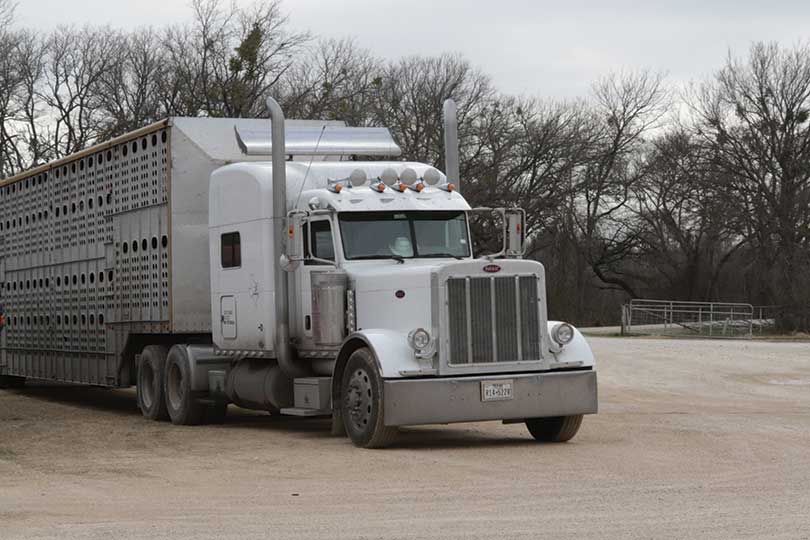By Julie Tomascik
Editor
When Jeff Croft hauls a load of cattle from his Anderson County ranch to the feedyard in Hereford, he follows safety protocols mandated by the Department of Transportation.
He tracks his routes and documents his hours.
But that could become more stringent if the Electronic Logging Device (ELD) mandate is implemented next month. The rule calls for a transition to electronic logs rather than paper records. It also modifies the hours of service for drivers.
ELDs plug directly into the vehicle and synchronize with the engine. They automatically record driving time for the vehicle.
The increased enforcement could mean additional costs to ship agricultural commodities or the need for another driver.
For Croft, that’s not the case yet.
“It’s usually about nine-and-a-half hours from my home to the feedyard, which falls within the ELD time limits,” he said.
But Croft’s trip wouldn’t if he switched feedyards, which is a possibility based on market demands.
And he can’t control traffic.
“I’ve been halted in traffic jams in Fort Worth many times,” he said. “There’s so many things out there that can change your timing on getting where you need to go, and that timeframe crunches me pretty heavily.”
After a maximum of 11 hours on the road—the allowable hours of service, drivers are required by law to take a break for 10 consecutive hours.
That, Croft says, has consequences.
“A trailer loaded with livestock is at greater risk of animal welfare issues if they are stopped for 10 consecutive hours, rather than allowing the driver to extend their trip and deliver those animals to their endpoint,” he said. “The alternative is to add another driver for what could be 15 minutes extra of drive time, or schedule a location for off-loading for 10 hours, which has its own risks.”
Those risks include potential injuries during loading and off-loading, increased stress on livestock and enhanced risk of exposure to diseases.
In addition to possibly jeopardizing animal welfare, the rule could negatively impact commerce.
The hours of service limits the distance a buyer and seller can be from one another. For auction markets, that can impact their business.
“Well, it’d be like me telling Amazon that you can only ship something eight hours away in one day. Dry goods—they might be fine, but when you get that living, breathing animal on a trailer, he needs to go from point A to point B as fast and safe as possible,” Brian Uptmore, with the West Auction Barn, said.
Exemptions
There are some exemptions, though.
“This mandate is another regulatory challenge for farmers and ranchers,” Laramie Adams, Texas Farm Bureau national legislative director, said. “Agriculture has received several exemptions under the ELD rule. However, they do not provide enough relief to solve the issue at hand.”
Farmers and ranchers who haul their commodity from the point of origin to the destination using a covered farm vehicle—one that is registered and identified as such by the state—are generally exempt from the hours of service rule and requirement for an ELD. To keep the exemption, a farm truck and trailer must be operated by someone from that farm or ranch and must be used to transport their agricultural commodities.
A covered farm vehicle can also drive anywhere within Texas under this exemption and is not affected by the 150 air-mile radius restriction.
Drivers hauling livestock—such as cattle, hogs and poultry—will not be required to delay an eight-hour trip with an additional 30-minute rest break that would be applied to a non-agricultural commodity.
Drivers in covered farm vehicles, while traveling to further their agricultural enterprise, would be exempt from ELD and the hours of service regulations for interstate travel if the combined vehicle weight rating is less than 26,001 pounds as noted by the manufacturer. For those that exceed that vehicle weight rating, restrictions apply once they travel outside of the home state.
“In trucks that exceed the 26,001 pound limit and travel across state lines, the ELD and hours of service regulations will come into play, requiring those drivers to install and use the device once they travel outside the state,” Adams said.
Farmers and ranchers with state-licensed covered farm vehicles,

